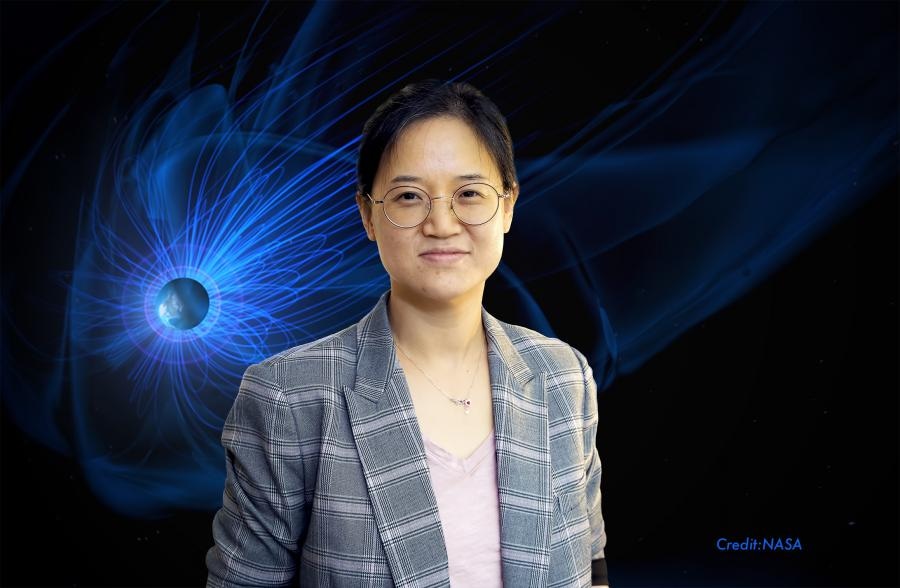Jul 15 2019
The Earth and other planets are encircled by enormous rings of electrically charged particles.
 PPPL physicist Eun-Hwa Kim. (Image credit: Photo by Elle Starkman)
PPPL physicist Eun-Hwa Kim. (Image credit: Photo by Elle Starkman)
Currently, a group of researchers has completed studies into waves that propagate through this magnetic, electrically charged medium, called the magnetosphere. The study offers in-depth insights into the region and its interaction with Earth, thereby paving new ways to investigate other planets throughout the galaxy.
Led by Eun-Hwa Kim, physicist at the U.S. Department of Energy’s (DOE) Princeton Plasma Physics Laboratory (PPPL), the team investigated a kind of wave that propagates through the magnetosphere. Termed electromagnetic ion cyclotron (EMIC) waves, these waves unravel the density of the plasma particles and the temperature inside the magnetosphere, among other properties.
“Waves are a kind of signal from the plasma,” stated Kim, lead author of a paper reporting the study outcomes in JGR Space Physics. “Therefore, the EMIC waves can be used as diagnostic tools to reveal some of the plasma’s characteristics.”
Together with researchers Andrews University in Michigan and Kyung Hee University in South Korea, Kim focused their study on mode conversion, the manner in which some EMIC waves are formed. In the course of the process, other waves that get compressed along the direction they move from outer space bump into Earth’s magnetosphere and activate the formation of EMIC waves. Then, the EMIC waves zoom off at a specific angle and polarization—the direction in which all of the light waves vibrate.
The researchers used PPPL computers to perform simulations revealing that these mode-converted EMIC waves have the ability to travel through the magnetosphere along magnetic field lines at a normal angle of <90°, with respect to the border of the region with space.
Understanding properties such as these allows physicists to find out EMIC waves and collect information related to the magnetosphere with very little initial information.
Better insights into the magnetosphere could offer in-depth information related to the way Earth and other planets interact with their space environment. For example, the waves could enable researchers to establish the density of elements such as oxygen and helium in the magnetosphere, and also know more about the flow of charged particles from the sun that leads to the aurora borealis.
Furthermore, engineers use waves similar to EMIC waves to promote the heating of plasma in tokamaks—doughnut-shaped magnetic fusion devices. Therefore, analysis of the behavior of the waves in the magnetosphere could offer an in-depth understanding of the creation of fusion energy, which occurs when plasma particles collide to form heavier particles.
Researchers across the globe strive to simulate fusion on Earth to achieve an almost endless supply of power to produce electricity.
Thus, knowledge of EMIC waves could offer a broad array of advantages.
We are really eager to understand the magnetosphere and how it mediates the effect that space weather has on our planet. Being able to use EMIC waves as diagnostics would be very helpful.
Eun-Hwa Kim, Physicist, Princeton Plasma Physics Laboratory
The DOE’s Office of Science (Fusion Energy Sciences), the National Science Foundation, and the National Aeronautics and Space Administration supported this study.